How to Organize First Aid Supplies + an Essential Supply List for Every Home
When it comes to first aid, organization is key. If you’re not sure where to start, don’t worry! In this blog post, we will give you some tips on how to organize your supplies as well as a list of essential items that every home should have in case of a medical emergency. It’s important to keep all of your supplies in one place so that you can easily find and use them when someone is hurt. But don’t forget to label each area so you know what is where!
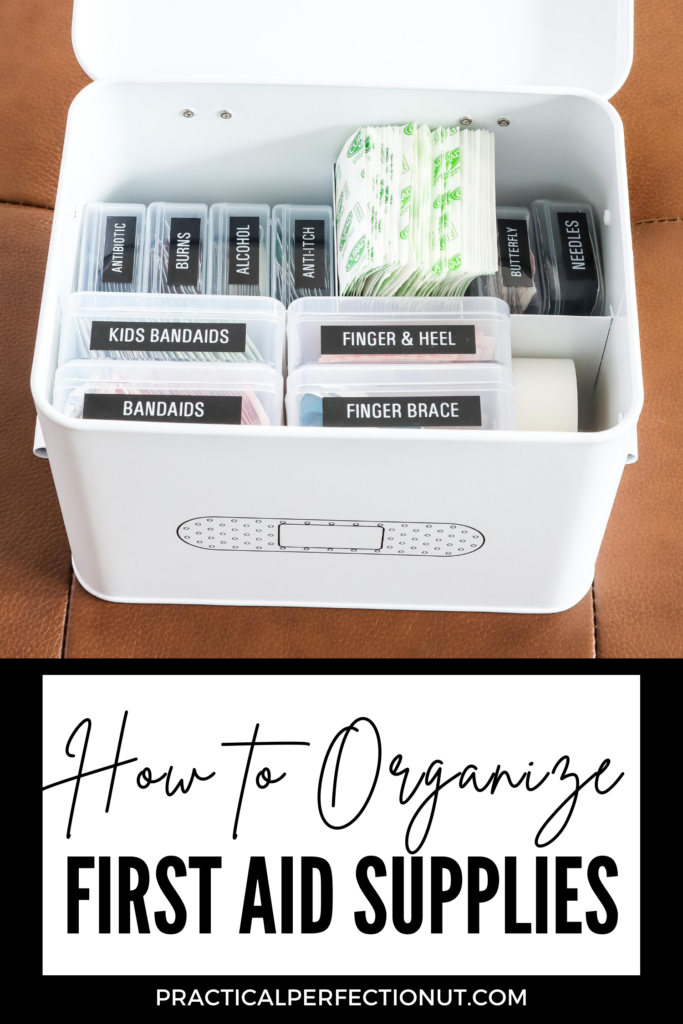
Why is it important to organize your first aid supplies?
Some may wonder why it is important to organize your first aid kit, especially if you don’t use it often. But when an emergency does happen, you’ll be glad you took the time to organize your supplies! If everything is stored in a random place, you’ll waste valuable time searching for what you need. Not to mention, it can be dangerous if someone is injured and you can’t find the first aid supplies.
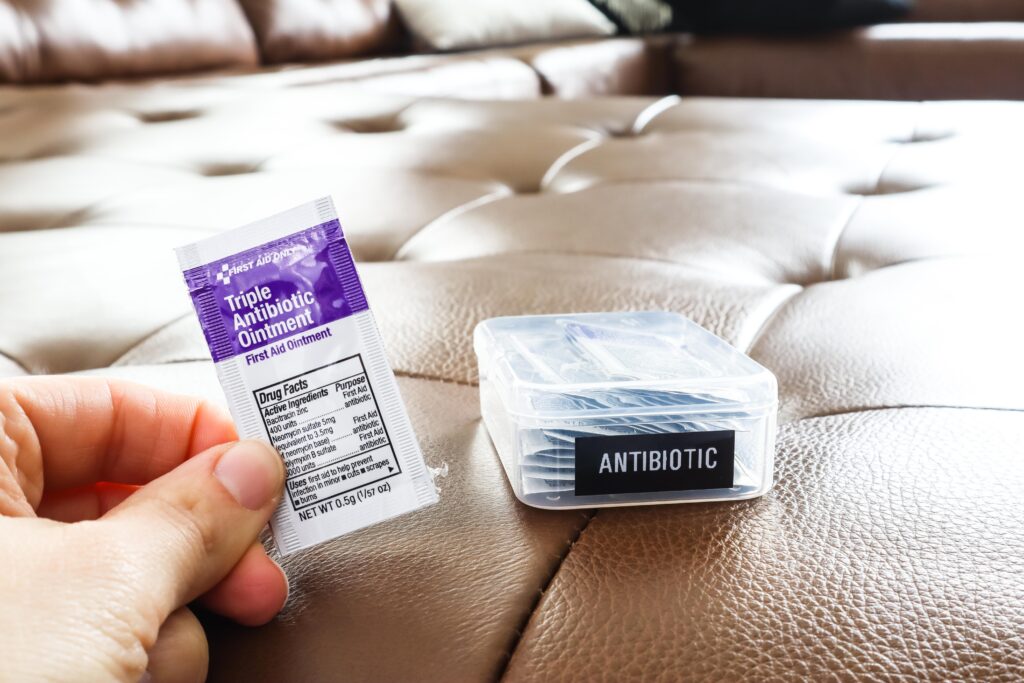
Where is the best place to store first aid supplies?
You can store your home first aid kit in a variety of places but it’s important to take into consideration the ages of people that come into your home. Small children and pets should not have access to first aid supplies. If you have young children, it might be best to store your first aid kit on a high shelf or in a locked cabinet.
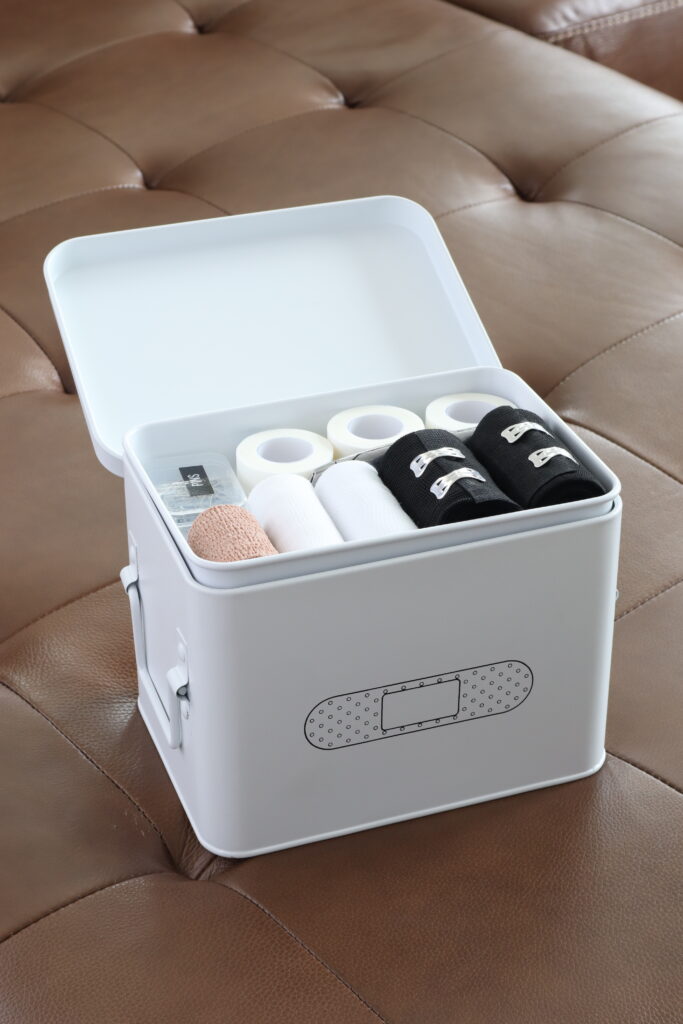
For everyone else, the first aid kit should be stored in an easily accessible place, like under the sink or in a closet. The most important thing to remember is to put it in a place where it can be found quickly and most people typically store them near their medicine and medical supplies. Here are a few best practices (and locations) of where to store your first aid:
- Keep them in a central location
- Keep them near medications
- Keep them out of reach of small children
- In a logical place where it can be found in an emergency by guests or family members
- Kitchen Cabinet
- Hallway Closet
- Medicine Cabinet
- Bathroom Cupboard or Closet
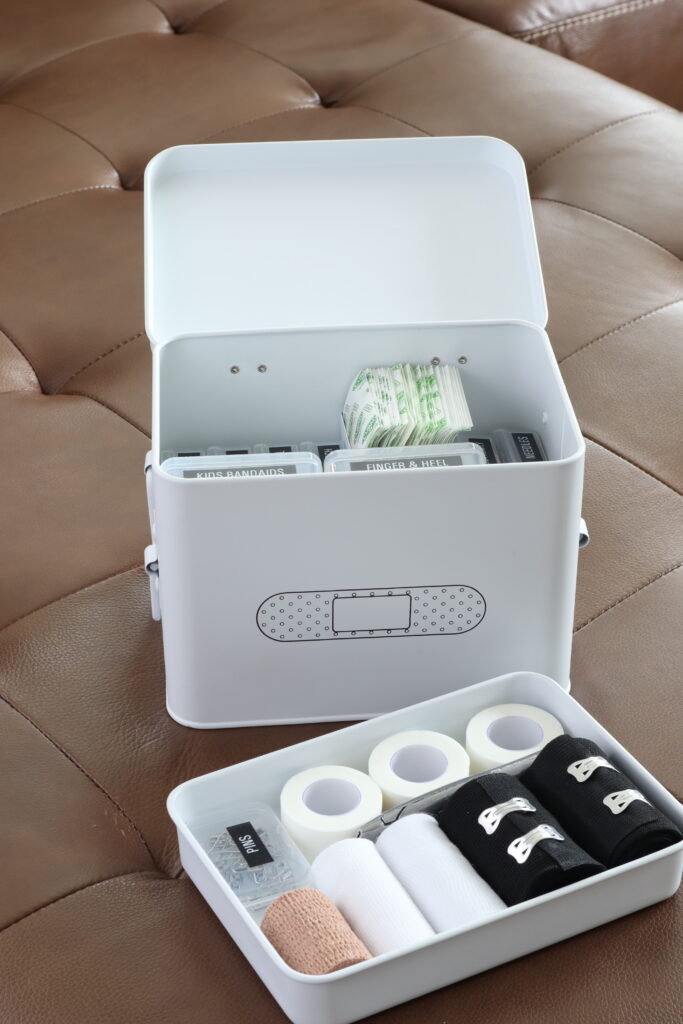
What are the first aid essentials for every home?
For the purposes of this post, I will only be listing essentials that are regarding first aid, and not any medications such as cough medicine, pain relief, vitamins, or prescription medications. I’ll address medications in another post. These recommendations are adequate for personal use in a typical home.

Because I am not a medical professional, I reached out to a few friends of mine (who are) to see what items they recommend for first aid that people would benefit from but generally don’t know about. One friend told me that you are more likely to get in trouble with an infection than bleeding to death so it’s super important to use saline solution when cleaning out wounds. It makes a big difference!
Essential First Aid Kit Supplies
- Band aids of various sizes
- Knuckle Bandaids
- Heel Bandaids
- Elastic Bandage Wrap
- Hydrogen Peroxide (ONLY USE for cleaning up blood, don’t actually use it on wounds…it’s damaging to healthy skin)
- Antibiotic ointment or Curad Silver Wound Gel (better than Neosporin – Neosporin is a low-key no-no in the medical field)
- Finger Splints
- QuikClot
- Non-Stick Gauze Pads
- Non-Stick Gauze Roll
- Steri Strips (better than butterfly bandaids)
- Sterile Saline Vials (to clean out wounds)
- Saline Wound Wash
- Self Adhesive Bandage Wrap
- Alcohol wipes
- Hydrocortisone cream (I’m obsessed with these small packets versus a tube)
- Tweezers (to remove debris from wounds)
- Hot Cold Pack
- Burn Cream (I’m obsessed with these small packets versus a tube)
- First Aid Quick Guide
- Pain Relief Medications (Ibuprofen or Acetaminophen)
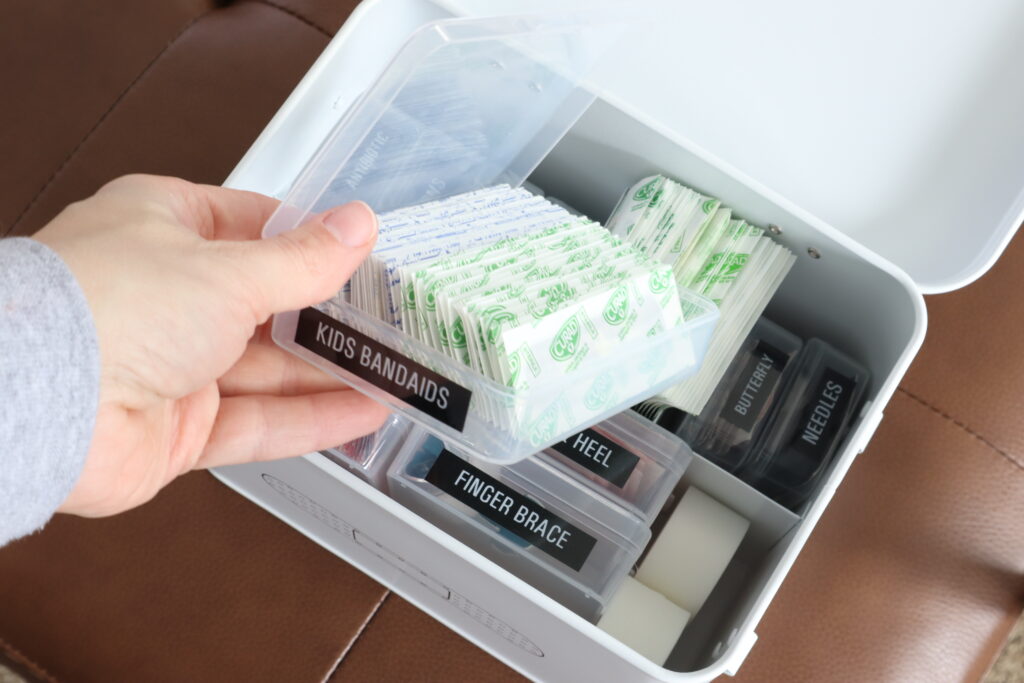
How do you organize first aid kit?
Now that we’ve covered why first aid organization is important, now we will talk about how to organize your first aid kit. This is one of those small projects that doesn’t take much time but can really impact your life for the better.
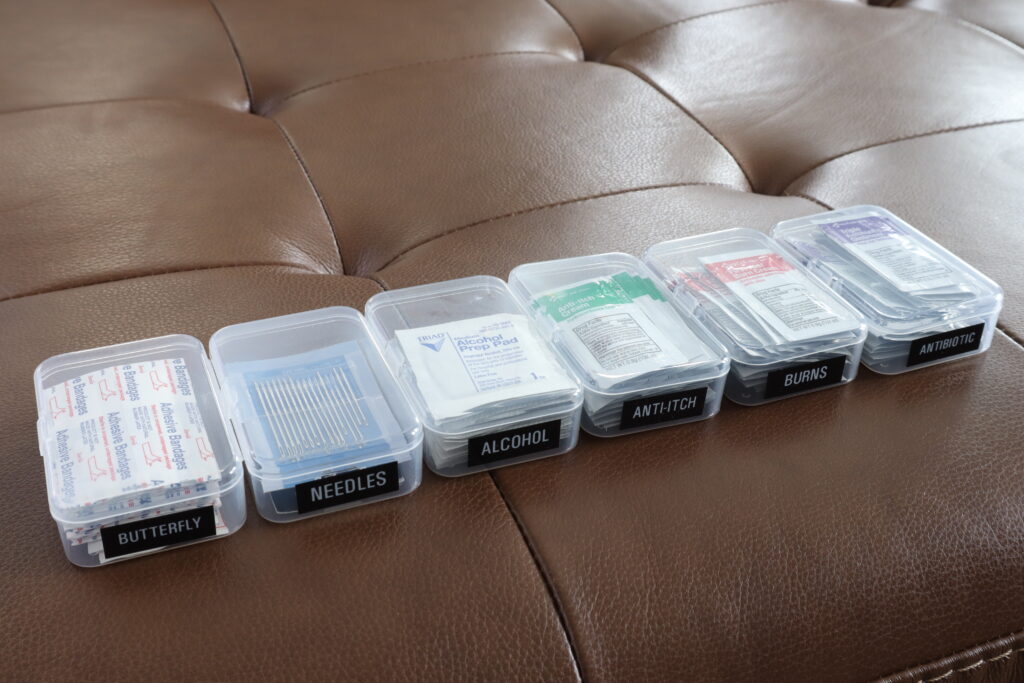
There are a few ways you can go about this. The first thing to remember is to label everything. This will help you find what you need when someone is injured. You can organize first aid supplies in a bin, a drawer system, a tote, small plastic containers, or in bags. But it’s super important to remember to label each area so you can easily find what you need.
You also need to remember to check the expiration date for things such as burn creams and ointments. It’s super important that you don’t pass the expiration date on these things so they have maximum effectiveness.
6 different ways to organize your first aid kit:
- Bins
- Drawer System
- Small Storage Drawer System
- Divided Stacking Container
- Fishing Tackle Box
- Zipper Pouches
- Small Plastic Containers (these are the ones that I am using in these photos…or these)
Bins
This is probably the easiest way to organize first aid materials. You can buy a cheap Sterilite bin from Walmart or Target and label it with “First Aid.” Then, you can just throw everything in there. The only downfall to this method is that it can be difficult to find things when you need them. So, if you go this route, I would recommend putting the items that you use most often on top.
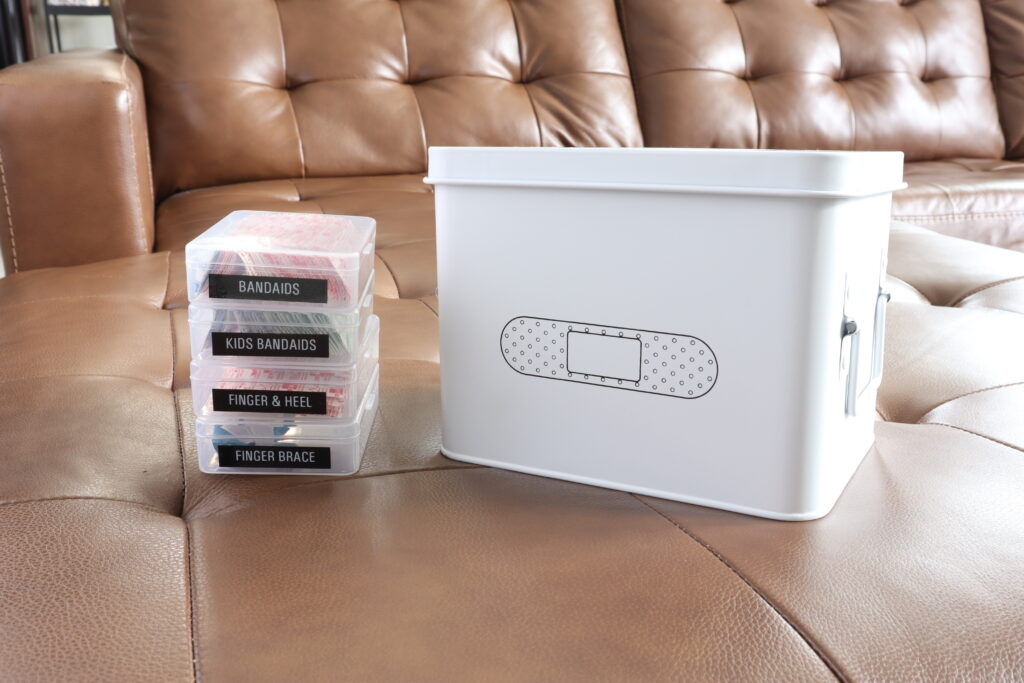
Drawer System
I love drawer systems for first aid supplies because they keep everything neat and divided into certain sections. You can have a drawer specifically dedicated to the different types of band aids, and another drawer dedicated to pain relief medications. If you want to keep things extra organized, I think it’s a great idea to use sub-systems within the drawers to you and quickly find exactly what you need.
Small Storage Drawer System
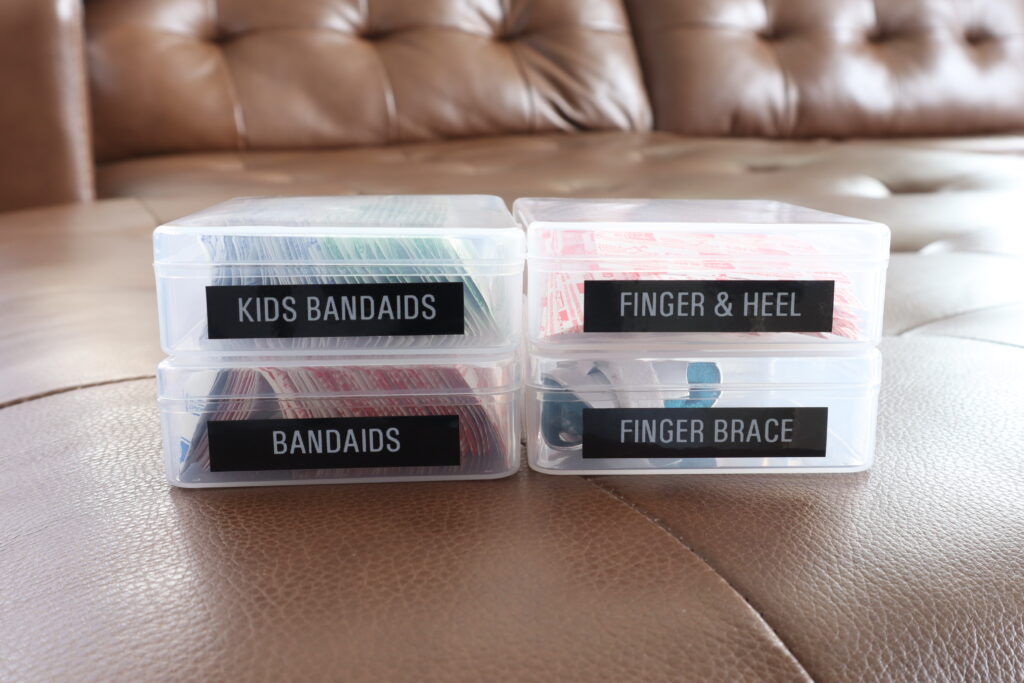
This is a good solution if you want to micro-organize your first aid essentials. This really helps with organizing because things are easily divided up and it evenly distributes the space. You can store different medicine types in each drawer, or even split up the different types of bandaids. Although, this is one of those storage solutions that may not be good if you have tons of larger items.
Divided Stacking Container
This is one of those great storage solutions for on-the-go scenarios. If you like to bring your first aid supplies with you on your adventure, this would be a great way to organize your first aid supplies.
Each layer could contain a different category (such as bandaids, cleaning out wounds, or pain relief medicine) and you can organize each category within each layer using the adjustable dividers.
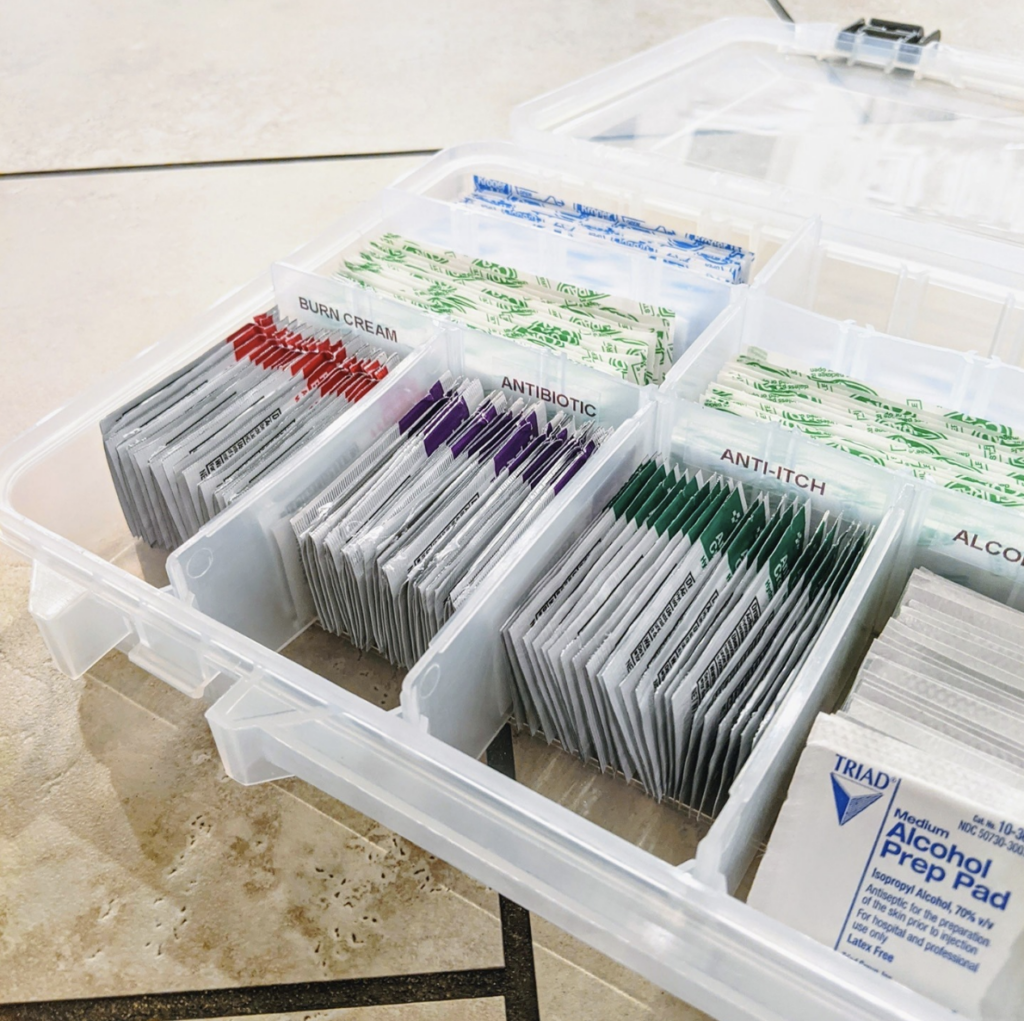
Fishing Tackle Box
I have actually used this method for years. I felt really prepared but I bought a tackle box that was just too big. It was irritating to store but it did wonders for keeping everything insanely organized. I got my inspiration from A Bowl Full of Lemons.
Zipper Pouches
One of the staple organizing methods is to use zipper pouches. They can easily be labeled on the outside while keeping things inside contained and organized. You can easily line the zipper pouches up in an organized fashion and easily flip through them to get what you need. I suggest keeping smaller first aid supplies like bandaids, tapes, tweezers, and scissors, etc. in these.
Small Plastic Containers
This is my favorite way to organize first aid supplies. It’s super simple and straightforward! It’s easy to read exactly what is in each compartment and you can organize and arrange them in any sort of container. These create an extremely streamlined look while keeping everything micro-organized.
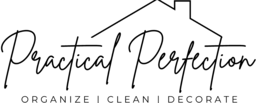

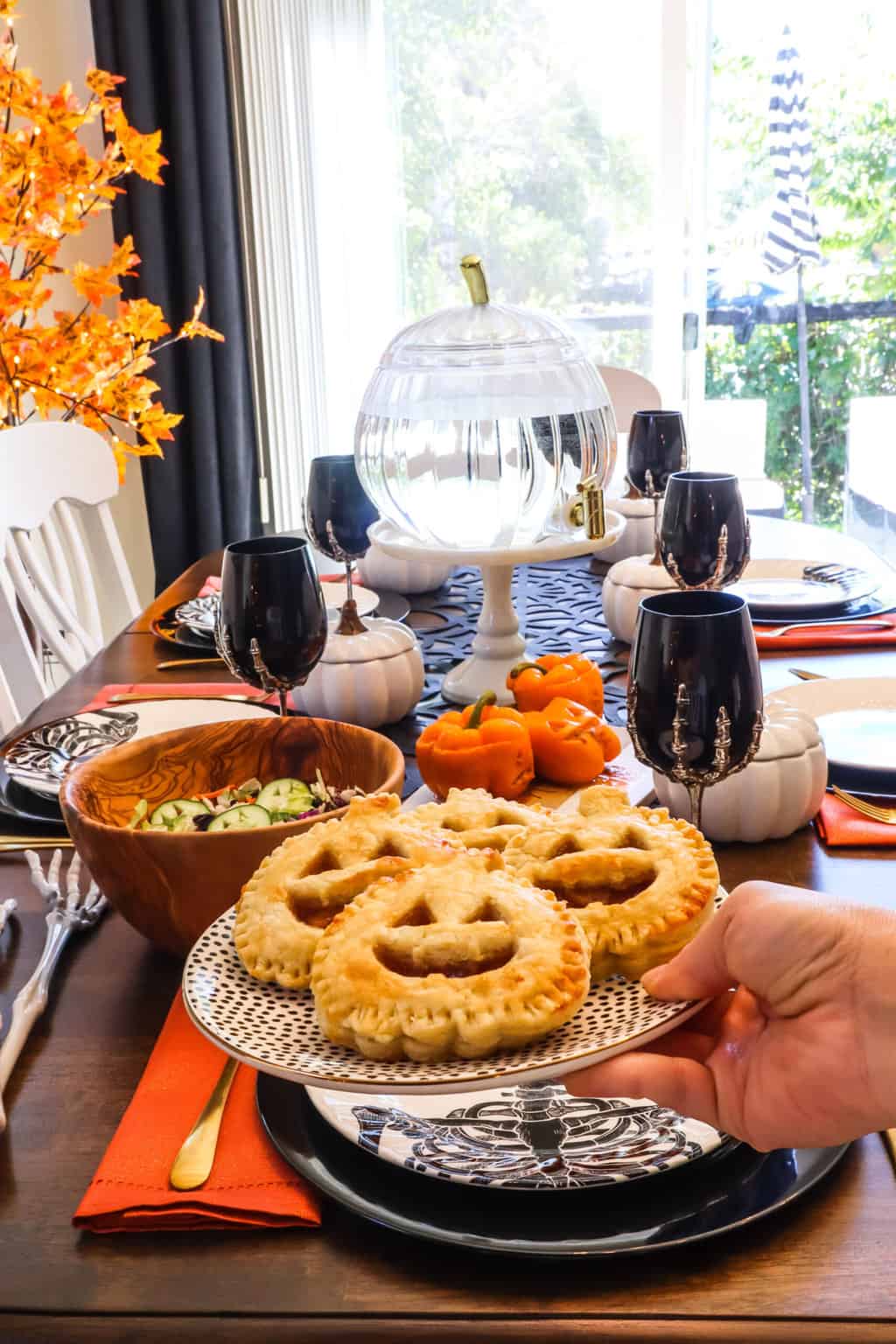
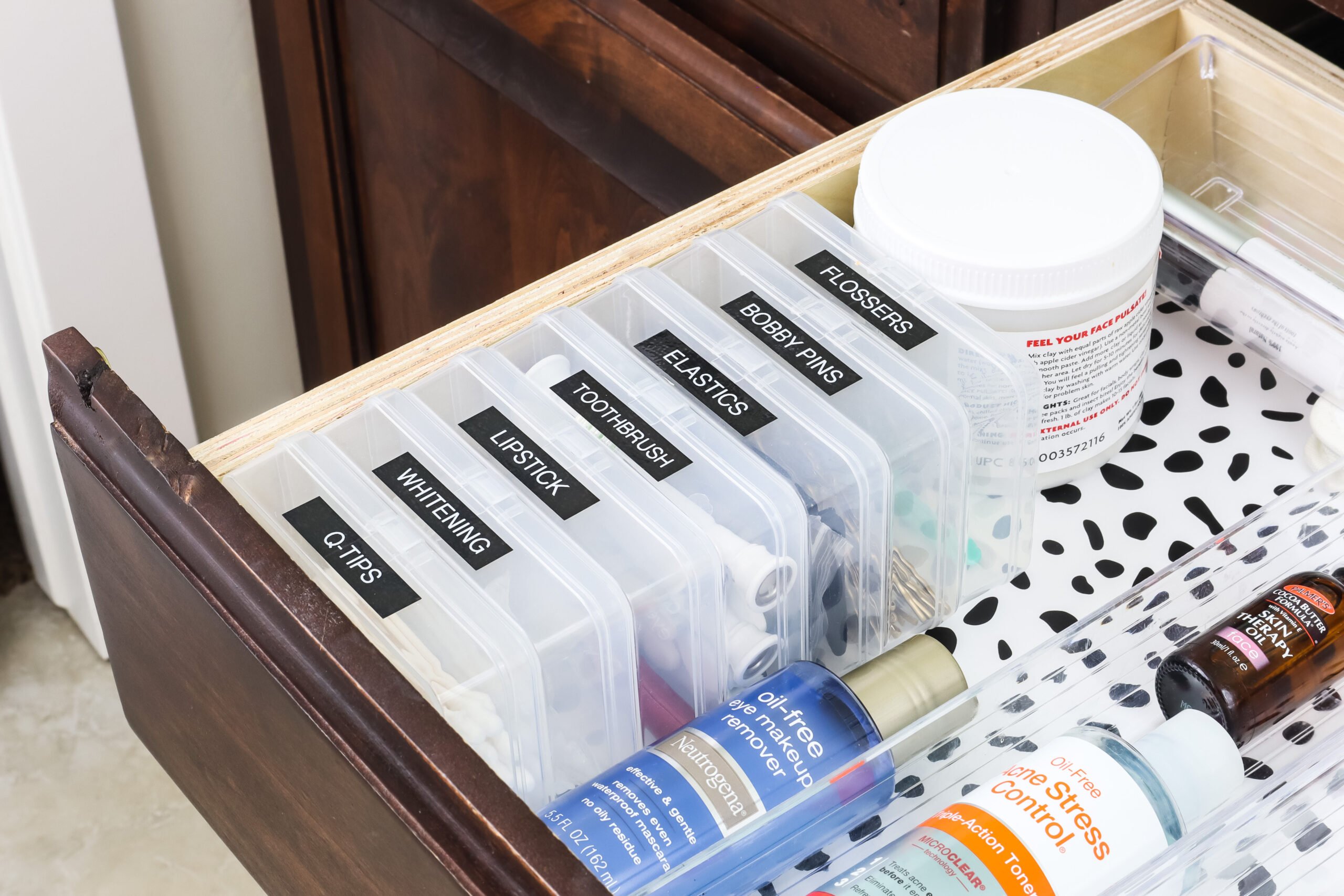
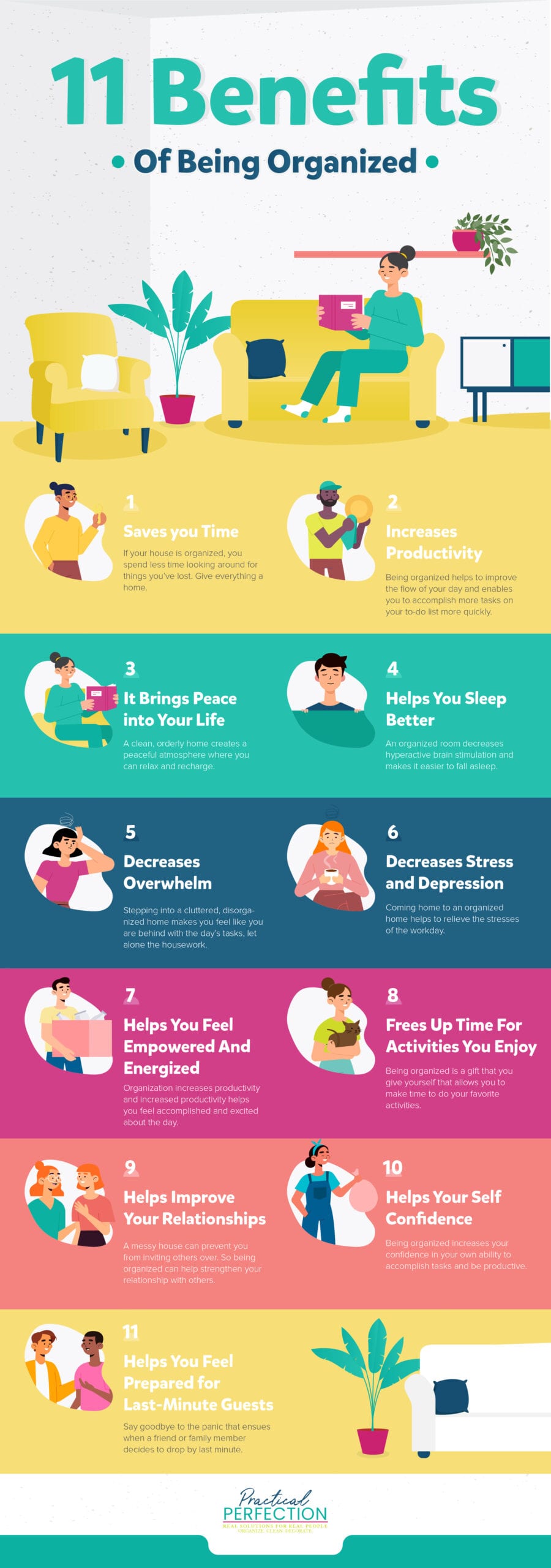

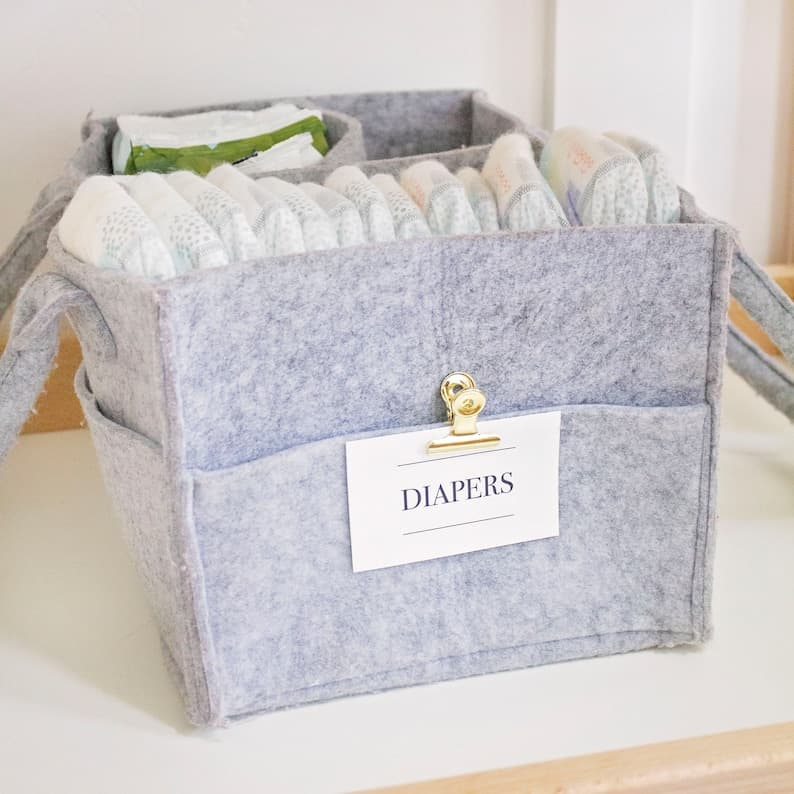
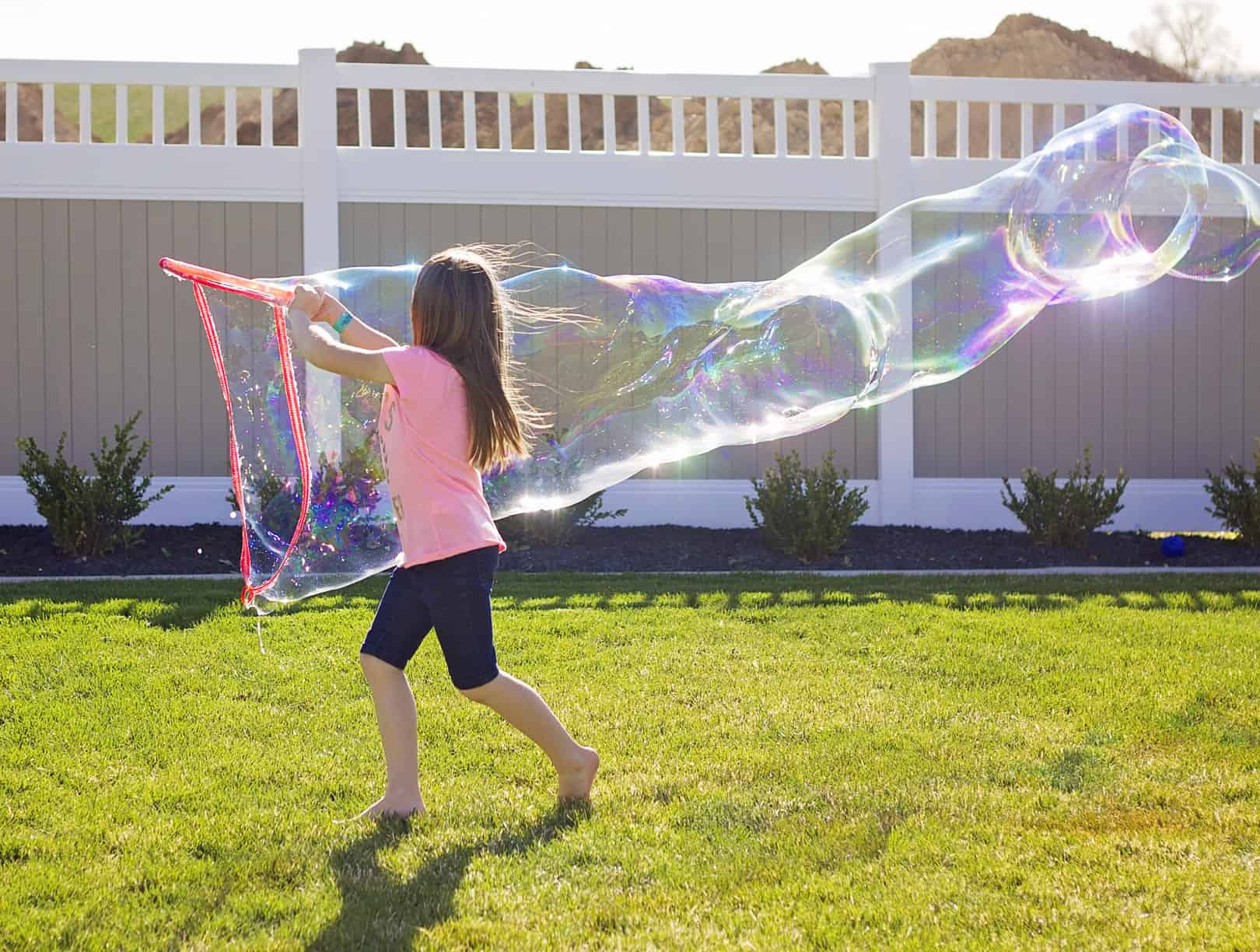
Great tips for the first aid kit! It’s an important thing to have in the house, and so many people forget about the need to organize and maintain it. Thanks for sharing.
Hello, Thanks for the tips! I appreciate it. What I really want to know, though, is where did you get all of the labels? Did you use a Brother Label machine? Look forward to your reply and thanks.
Kathleen
Hey Kathleen! Thanks for the comment. I use this label maker with black tape: https://amzn.to/3OA4mw4
It’s a bit of an investment but I am using it constantly all over my entire home. Hope that helps!
OK, thanks for your quick reply. I’ll look into it.
Love the white metal bin you used in the pictures. Where did you find that? Did you make that? Apologies if I’ve overlooked a link. Thanks a bunch, Ash
I found it at TJ Maxx!